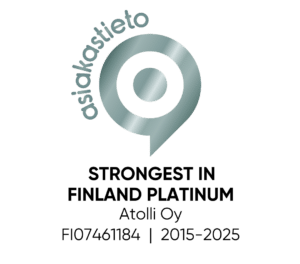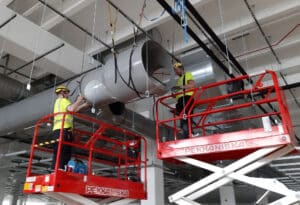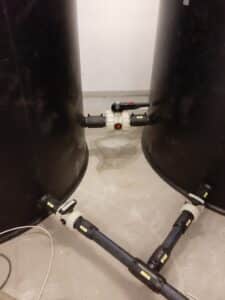The purpose of this project was to renew the local exhaust system of a food manufacturer located in Eastern Finland. The previous system was made of acid-resistant steel (HST), and its lifespan was shorter than expected.
By switching the material to flame-retardant polypropylene (PPs), the lifespan of the ductwork can be extended.
Due to high humidity, condensate forms at the site. Separators and slopes were used in the project for controlled removal of condensate. Additionally, custom-made components such as suction cones were produced for the site.
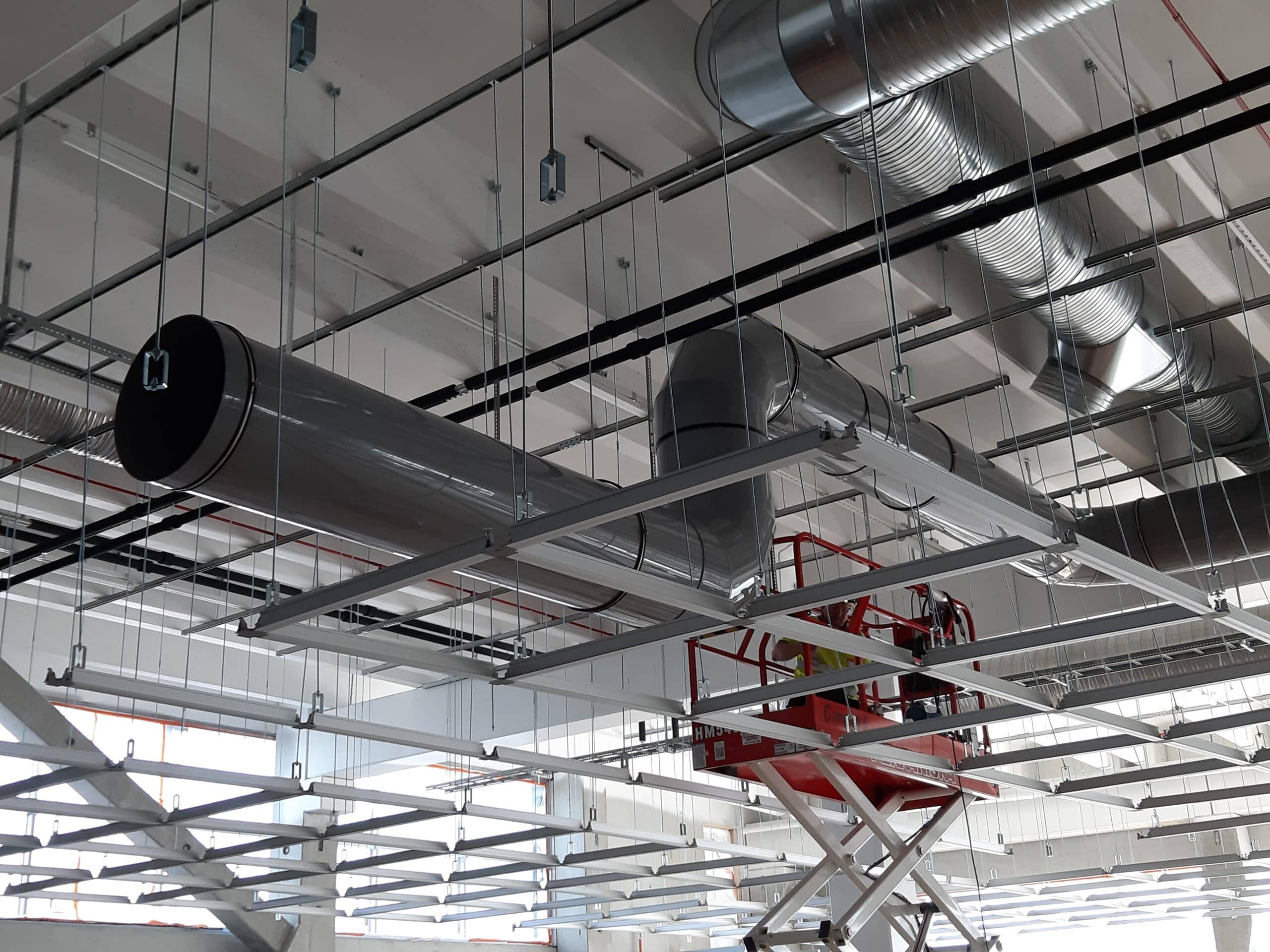
Photo 1. A PPs ventilation duct similar to this project
Materials
Selection
The material chosen for the project’s ventilation ducts was flame-retardant polypropylene (PP). PPs is highly suitable for applications requiring chemical and thermal resistance. PPs is the most used material in ventilation ducts. PPs is not yet food-approved, but since there is no contact with food in this project, the choice of material was straightforward.
Polypropylene
Polypropylene (PP) is the third most used plastic material. It has a hard surface, good chemical resistance (especially to solvents and alcohols) and withstands higher temperatures than polyethylene (PE). PP is typically used in process pipelines and as structural or lining material for tanks.
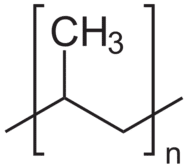
PP-H chemical formula
PP is also available as a self-extinguishing PPs material with fire protection in accordance with DIN 4102-1 B1. The material has excellent mechanical properties and withstands hot steam well. The minimum operating temperature for PPs is +0°C, and it can withstand temperatures of up to 90°C for short-term use. Other advantages of the material include:
● Excellent corrosion resistance
● Tight ductwork with solid seams; easy to weld
● Long lifespan
● Easy to sustain cleanliness
● Nearly maintenance-free
● Quick to install
● Can be used to manufacture custom products
● Suitable for indoor use.
Welding parameters PPs
DVS 2207-3
| Gas Temperature [°C] | 300 – 340 |
| Gas Flow Rate [NI/min] | Kaasun tilavuusvirtaus [NI/min] |
| Welding Speed[mm/min] | 250 – 350 |
| Welding force [at a bar diameter in kg 4 mm/5 mm] | 2,5 – 3,5/4,0 – 4,5 |
In addition, a wide range of components, such as valves, dampers, and condensate separators, are readily available for the material. Typical applications for PPs include the process, food, and semiconductor industries, as well as construction.
Material Suppliers
The pipes and pipe fittings used by Atolli Oy are from well-known European plastic companies. Thanks to the strict quality standards of our suppliers, we can offer reliable products that ensure safe and consistent installation. For this project, the pipe supplier selected was the Austrian company Agru, and the pipe fittings were supplied by the German company HoKa.


Material manufacturers AGRU and HoKa
Installation
The pipe installation was carried out by Atolli Oy’s skilled installation team. The personnel who installed the ductwork have training as thermoplastic pipe installers and have over 2 years of experience in welding plastic pipelines.
Pre-fabrication work began at Atolli Oy’s production facilities in Valkeakoski to reduce installation time on-site. This work involved wire and extruder welding.
In wire or hot-air welding of plastic, the material to be welded and the welding wire are heated simultaneously with hot air, pressing the wire into the welding groove. A hot-air welding device is used for heating, and the welding temperatures vary depending on the thickness of the plastic used. The experience and skill of the welder are crucial in this method.
In extruder welding, plastic parts are joined similarly to hot-air welding, but instead of a welding wire, the filler material is a filler mass formed by an extruder device. Extruders produce the filler mass from welding wire or plastic granulate. Extruder welding is a suitable technique for large pipe diameters. The work is manual, and thus the quality of the seam depends on the welder’s skill. Successful welding requires the right temperature, clean surfaces, and the correct welding speed and pressure.

Kuva 2. PPs ductwork installation
Documentation
As with all Atolli’s projects, comprehensive documentation was created for this project and delivered to the client upon completion. The documentation includes:
• Product list
• Risk assessment
• Drawings and diagrams
• Ductwork database
• Material certificates
• Measurement reports
• Maintenance and upkeeping plan
This project was completed on schedule, and the client was satisfied. It was a pleasure to work on this project!

